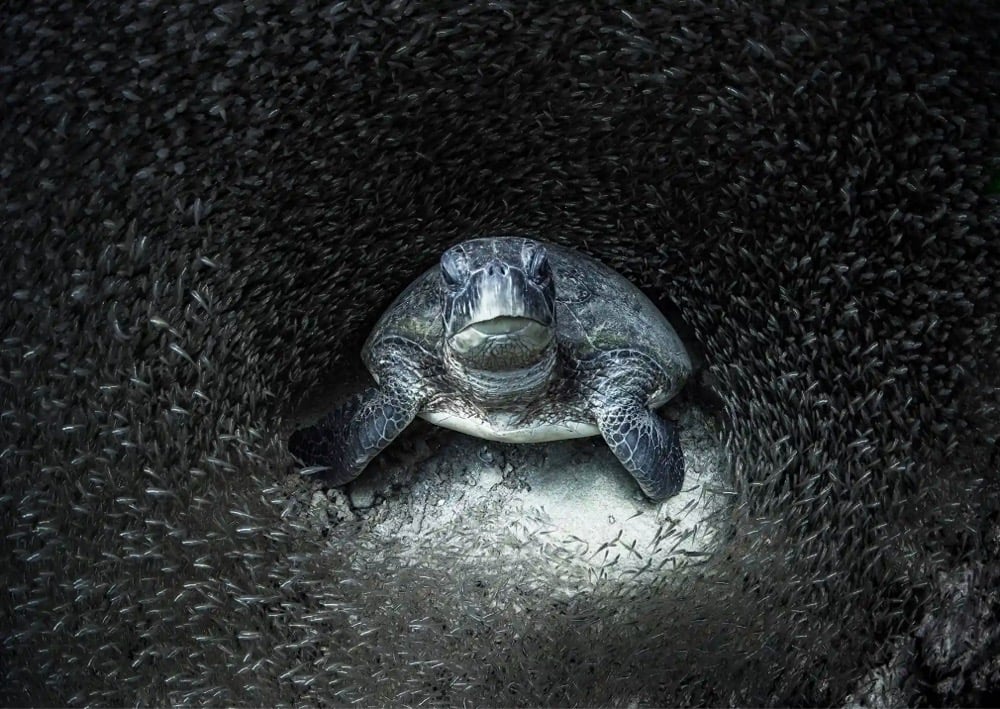

Oceanographic Magazine has announced the winners of their annual Ocean Photography Awards for 2021. The official site is reeeally slow so you can check out the winners at The Guardian, the BBC, or on Instagram. Photos above are by Hannah Le Leu (top) and Aimee Jan (bottom).
The whole-earth nature documentary space is quickly becoming crowded. We’ve got:
The Blue Planet, 2001
Deep Blue, 2003
Planet Earth, 2006
Earth, 2009
Nature’s Great Events, 2009
Oceans, 2010
The last one on the list is from Disney. If you watch the trailer, the company is attempting to say, “Planet Earth? Ha! Disney was down with nature all along!” Pfft. A point in Disney’s favor however is that Oceans is being done by Jacques Perrin, the man responsible for Microcosmos and Winged Migration. Points against: the film has cost $75 million so far (for a documentary!), the footage in the trailer looks like it was lifted directly from The Blue Planet and Planet Earth, and no David Attenborough narration.
Update: I added Earth to the list, also from Disney. Here’s the trailer. BBC and Discovery are listed as partners so it’s likely that the footage in the film is from Planet Earth. (thx, @gjdsalinger)
Update: Earth is indeed mostly material taken from Planet Earth. Disney helped bankroll the production in the first place.
Update: I added Deep Blue to the list as well, a feature-length version of The Blue Planet. (thx, @aknock)
The coelacanth, a 400 million year old prehistoric fish once thought to be extinct, has undergone a CT scan. Forty eggs were found inside of the large, frozen bodies of the two coelacanth tested, originally caught off the coast of Tanzania and then shipped to Japan for study.
The coelacanth young are thought to hatch inside of the mother and grow to 30cm before their live birth, when they swim outside of her body, looking identical to their parents, only tiny and cute. The discovery of the eggs could contribute to evidence that the ancient ocean dweller is the missing link between fish and amphibians:
Many scientists believe that the unique characteristics of the coelacanth represent an early step in the evolution of fish to terrestrial four-legged animals like amphibians. The most striking feature of this “living fossil” is its paired lobe fins that extend away from its body like legs and move in an alternating pattern, like a trotting horse.
As far as fish go, it’s just a shade prettier than the sea wolf.







Stay Connected